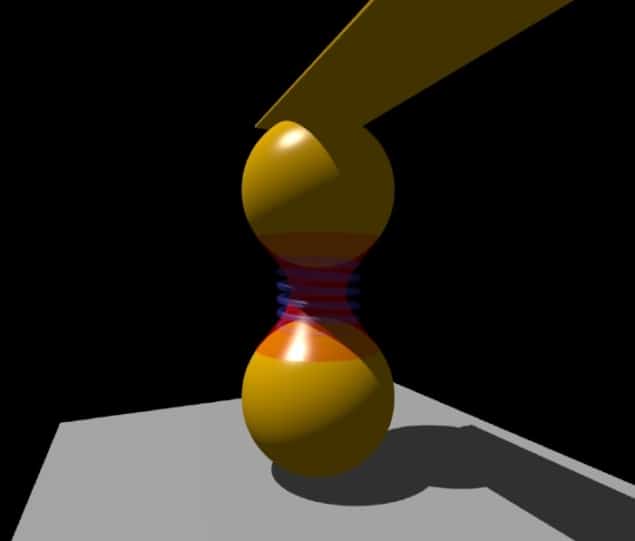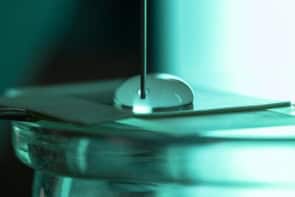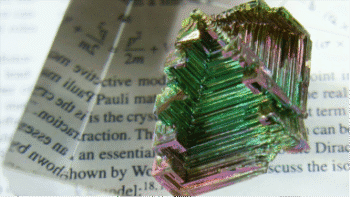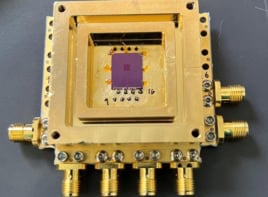
The ability to work-out the Casimir force between arbitrarily-shaped objects could be one step closer thanks to work done by physicists in the US. The team used an atomic force microscope to measure the force between two gold-coated spheres. This is unlike most experiments today, which are limited to measuring the Casimir force between a flat surface and a sphere.
The research could lead to a better understanding of the Casimir force in complicated geometries – something that would be very useful to those trying to create more robust and versatile microelectromechanical systems (MEMS).
In 1948, the Dutch physicist Hendrik Casimir predicted, counter-intuitively, that two uncharged, parallel mirrors, or “plates”, should attract one another very slightly when in a vacuum. He reasoned that the virtual photons, which quantum mechanics says continually flit into and out of existence within the vacuum, would exert radiation pressure on both sides of each plate. But because the plates create what amounts to an optical cavity, only electromagnetic waves with certain well-defined frequencies could exist between them. The radiation pressure would therefore be greater on the outside, so pushing the plates inwards.
Alignment woes
Casimir’s prediction has since been confirmed in the lab many times over. However, most experiments do not involve parallel plates because the effect is extremely sensitive to changes in distance. Therefore, any minute misalignment between plates would affect the results. Instead, most experiments measure the attraction between a single, long plate and a sphere. In this configuration, there is no need to worry about alignment because the shortest distance between the two objects will remain the same no matter how the sphere rotates.
Because Casimir’s equation describes the case of two parallel plates, predicting the outcome of plate-sphere experiments relies on approximating a curved surface by a series of very small parallel plates and that the total force involved is the sum of the forces from the individual plates. To date, this approximation has withstood nearly all empirical testing. However, according to Jeremy Munday of the University of Maryland, it should break down for very sharp curvatures and at edges.
In the latest work, Munday and colleagues Joe Garrett and David Somers consider the force between two spheres, which they describe as a “complex interaction geometry”. Unlike the plate-sphere tests, this kind of experiment requires continually aligning the centre of the two objects. The only time it has previously been attempted involved the interaction of polystyrene spheres in a liquid, rather than metals in air or a vacuum. Because the spheres were transparent they could be aligned optically (using optical tweezers), but, says, Munday, their interaction – being very-short range (between 8-20 nm) – was better described by van der Waals than Casimir forces.
Unambiguous target
The new experiment instead unambiguously targets the Casimir effect. It involves two gold-coated hollow glass spheres, each about 80 µm in diameter, which are separated by distances between 30-400 nm. One of the spheres is attached to a silicon substrate while the other is fixed to the cantilever arm of an atomic force microscope.
The idea is to set the bottom sphere oscillating up and down by a few nanometres and to measure the effect that has on the upper sphere by deflecting a laser beam off the cantilever arm to monitor its movement. If the spheres feel the Casimir force then they should move together in phase – as the bottom one moves upwards it reduces the gap between them, so increasing the force and causing the top one to move downwards, and vice-versa.
To carry out their experiment, the researchers had to overcome several technical challenges. To keep the spheres centred to within 1% of their radii over a 24 h period they imaged the spheres’ relative horizontal positions using the atomic force microscope before each measurement. They also had to filter out the potentially confounding effects of drag because the experiment was done in air. This can be done because drag is proportional to the velocity of the lower sphere and therefore 180° out of phase compared with the Casimir force, which depends on the sphere’s displacement. They also removed any possible electrostatic forces and calibrated their set-up, by applying suitable bias voltages to the spheres.
The team did a series of nine experiments in which three different-sized top spheres and three different-sized bottom spheres, each with a different radius. Analysis of data from all the measurements revealed that the spheres oscillated together just as predicted. This agreement between theory and experiment, says Munday, “suggests that the experiment was working as expected”.
Deviant behaviour
However, what he and his colleagues really want is a deviation, showing that the approximation they employed no longer holds. Detecting discrepancies, he estimates, will require reducing the effect of thermal noise from the cantilever by about an order of magnitude. The team will try to achieve this by increasing the number of measurements and by using a wider variety of sphere radii.
Establishing a deviation, says Munday, would allow them to test different theories about how the Casimir force behaves in more complex geometries, which should allow better control of the Casimir force inside MEMs. He points out that the Casimir force is already a problem for very tiny devices, since it can cause parts to stick to one another and break. But by better understanding how geometry affects the force, he says, it may be possible to reduce it or even make the force repulsive.
What’s more, adds Munday, in future it might be possible to invert their scheme and create an extremely sensitive displacement sensor by measuring tiny changes in the Casimir force. This, he says, might allow MEMS – which are used in everything from airbags to mobile phones – to become even smaller and cheaper to run.
A paper describing the research has been accepted for publication in Physical Review Letters.



